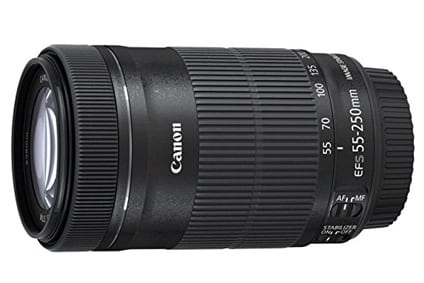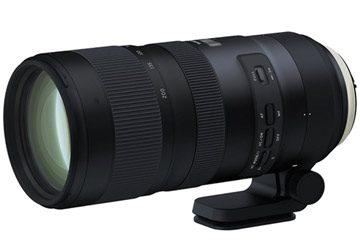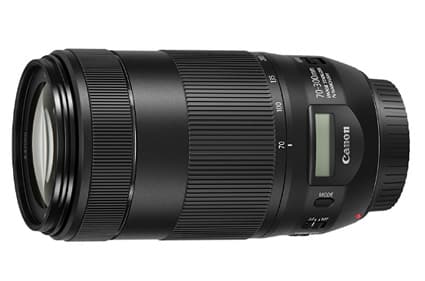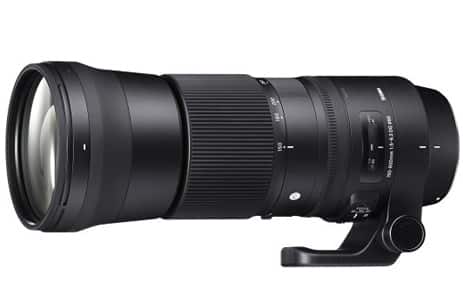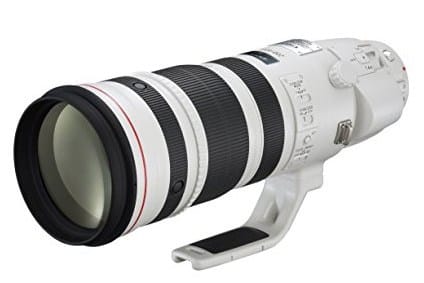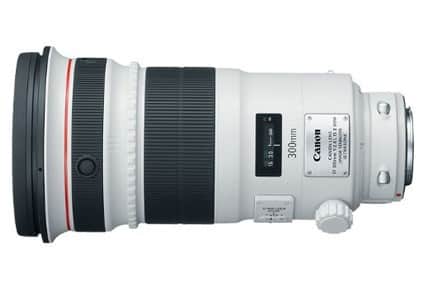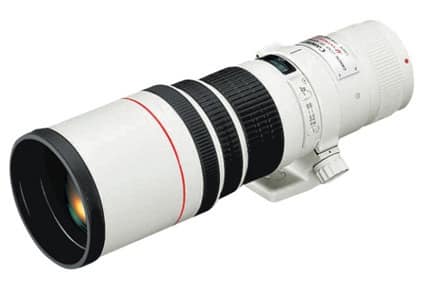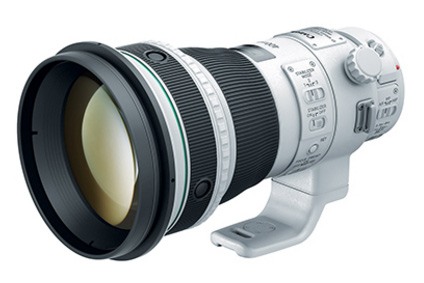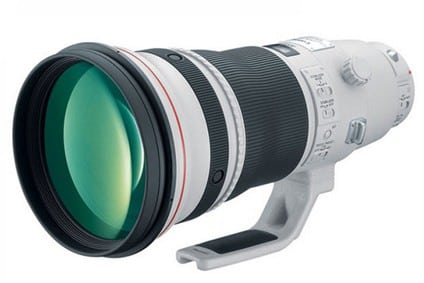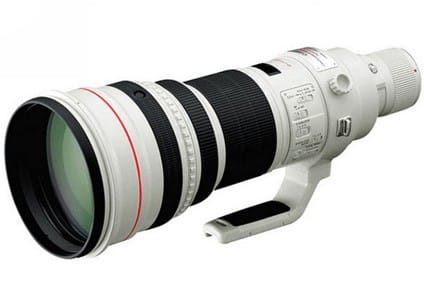Telephoto lenses are extremely popular due to the fact they can get you extremely close to your subject.
You can use them for photographing sports, wildlife, birds, portraits or even the moon. Anything that’s far away can appear much closer when you’ve got a telephoto lens.
There are a ton of different options for Canon DSLRs. We looked at lenses from Canon, Tamron and Sigma when making this guide.
What to know before buying a telephoto lens?
- Anything over 70mm is considered telephoto, but 200/300mm is where the real fun begins
- If shooting outside, having a big aperture helps. Aperture f/4 is great, but f/2.8 is even better for low light (more expensive though)
- Build quality of the lens is also important if you plan on shooting in difficult terrain (dust, sand, rain etc.)
- Fast auto focus with reliable accuracy is a must for shooting fast sports or animals
We’ve looked at everything available on the market, and selected the lenses that give you the most for your money. This means fast auto focus, great image quality and lots of reach.
Best Zoom Telephoto Lenses:
- Canon EF-S 55-250mm f/4-5.6 IS STM
- Tamron 70-200mm f/2.8 Di C G2
- Canon EF 70-200mm f/2.8L IS II USM
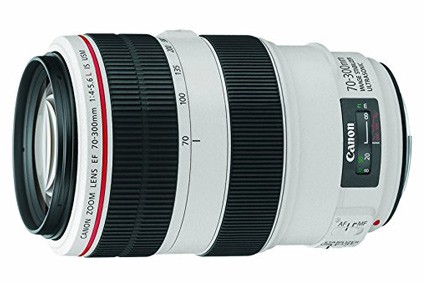
- Canon EF 70-300mm f/4-5.6 IS II USM
- Canon EF 70-300mm f/4-5.6L IS USM
- Canon EF 100-400mm f/4.5-5.6L IS II USM
- Sigma 150-600mm f/5.6-6.3 DG OS HSM C
- Canon EF 200-400mm f/4L IS USM Extender 1.4
Best Prime Telephoto Lenses:
- Canon EF 300mm f/4L IS USM
- Canon EF 400mm f/5.6L USM
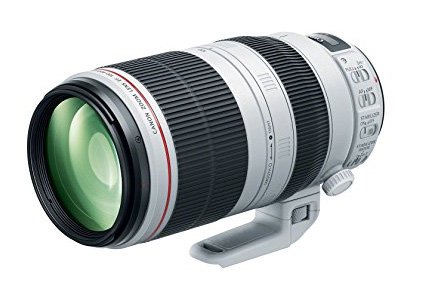
- Canon EF 300mm f/2.8 L IS II USM
- Canon EF 400mm f/4 DO IS II USM
- Canon EF 400mm f/2.8L IS II USM
- Canon EF 600mm f/4L IS II USM
Best Canon Telephoto Zoom Lenses
If you decide to buy anything after clicking on our Amazon links, you automatically support us. It’s what allows us to write guides such as this one.
1. Canon EF-S 55-250mm f/4-5.6 IS STM
The Canon EF-S 55-250mm f/4-5.6 IS STM is highly affordable and provides an excellent combination of reach, quality and size for the small price.
Seeing as it’s an EF-S lens (and the only one on this list too), it will only fit on an APS-C camera. Because of the 1.6x crop factor, it’s actually equivalent to a 88-400mm telephoto! This makes it a great choice for both animals and birds, as well as more casual, everyday stuff such as portraits and sports, because of that big zoom range.
Image quality is also surprisingly good at both 55mm and 250mm lengths. In fact, it’s identical to the 300mm below in terms of quality and chromatic aberration. It’s definitely usable at f/4 and f/5.6 at both ends, but sharpness gets even better at f/8.
To auto focus, the lens uses STM (Stepping Motor) technology that makes focusing nearly silent. Thanks to this, it’s great for video recording where the camera won’t pick up any lens focusing noise! It’s also quite quick and can follow the subject well, but it’s not something you can compare to the more expensive L lenses with a USM motor. You will most likely experience some hunting when shooting small birds with bad light.
An extremely welcome feature to have is Image Stabilization, and the 55-250mm IS STM helps up to 3.5 stops. At 250mm, this will help a lot as the longer you’re at, the more blur will be visible if you move (even if you’re not tired). The closest focusing distance is 0.85m / 2.79 feet, and the lens only weighs 375g / 13.2 oz.
You can buy it at Amazon or see more reviews here.
2. Tamron SP 70-200mm f/2.8 Di VC USD G2
The Tamron 70-200mm f/2.8 Di VC USD G2 was released a few months ago and is our favorite 70-200mm lens out there.
Here’s why. It’s cheaper than the rest, delivers nearly identical image quality and sharpness, has great Image Stabilization with 5 stops of help and great auto focus. On top of that, you get 6 years US warranty! Talk about customer support.
It competes with Canon’s and Nikon’s 70-200mm f/2.8 lenses. Image quality and auto focus performance are very very close on all 3 models, so if you’re looking to spend a lot less money, get the Tamron version.
The lens is perfect even for high megapixel cameras such as the 5Ds R. The VC works wonderfully up to 5 stops so you can expect sharp results with 1/15 where you’d need ~1/500 normally. The lens has weather sealing so if you’re shooting outdoors in difficult weather, or happen to be near water, you’ve got much less to worry about.
Check out the comparison Tamron vs Canon 70-200mm at SLRLounge here.
You can buy it at Amazon or see more reviews here.
3. Canon EF 70-200mm f/2.8L IS II USM
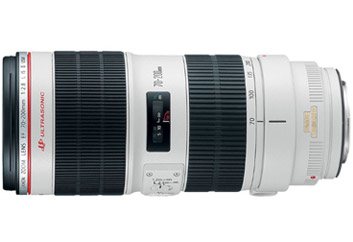 Here’s another legend for wedding and sports photography. The Canon EF 70-200mm f/2.8L IS II USM was released in 2010 and is the best and most expensive 70-200mm out there.
Here’s another legend for wedding and sports photography. The Canon EF 70-200mm f/2.8L IS II USM was released in 2010 and is the best and most expensive 70-200mm out there.
The length alone makes it great for many types of photography, ranging from portraits, sports, wildlife, indoor action, concerts, events, weddings. Besides having f/2.8 to work with in low light situations, the lens is also equipped with Image Stabilization that helps you up to 4 stops.
Build quality is top notch, you can safely use it in tough weather conditions. It’s also the heaviest of 70-200mm lenses, here’s the breakdown:
70-200mm f/2.8L IS II USM – 52.6 oz (1490g)
70-200mm f/2.8L USM – 46.2 oz (1310g)
70-200mm f/4L IS USM – 26.8 oz (760g)
70-200mm f/4L USM – 24.9 oz (705g)
If you’re only after the best and need IS, obviously get the f/2.8L IS II USM. However, if you know you won’t need IS or even f/2.8, and want a lighter lens, you’d be better off with any of the f/4L versions. They’re all worth the price and deliver great quality images. For weddings and other low light scenarios, having IS is quite important, especially when people are more still and it allows you to shoot with a smaller depth of field to get everyone in focus.
You can buy it at Amazon or see more reviews here.
4. Canon EF 70-300mm f/4-5.6 IS II USM
Here’s what the Canon EF 70-300mm f/4-5.6 IS II USM offers: full frame compatibility, 50mm more reach, better build quality and faster auto focusing.
It replaces the 70-300mm f/4-5.6 IS USM released in 2005. Optically, it’s more usable from 250 to 300mm, shows less chromatic aberration and more contrast.
Image Stabilization is 1 stop better (4 stops) and it features a Nano USM motor for focusing. It’s silent, quick and more accurate than the 55-250mm above. It also looks cooler and has an LCD display that displays information such as focal length (also when on an APS-C sensor), aperture and more. Not really that useful, but can’t complain.
It costs $100 more than the first version, and $250 more than the 55-250mm. It might be a tough decision to pick one, but if you’ve got a FF sensor and don’t want to spend much, the 70-300mm II is a great option. For APS-C users, the image quality is more or less identical to the 55-250mm and the biggest difference is the AF speed and of course the extra 50mm. For birds and really far animals, this will make a difference, but it’s up to you to decide.
You can buy it at Amazon or see more reviews here.
5. Canon EF 70-300mm f/4-5.6L IS USM UD
Since 70-300mm zooms are extremely popular, Canon also released the Canon EF 70-300mm f/4-5.6L IS USM UD.
First, we’ll talk about the things that are the same or almost identical to the non-L version. The lens has a variable aperture so you’ll have to raise the ISO when shooting indoors at 300mm because you won’t be getting enough light. Unless you have an older DSLR, this shouldn’t be that big of a problem.
The second is the image quality; this is also not the reason for the bigger price as both lenses are equally as sharp and it’ll be hard to spot any differences in corners and center. It does have a floating focusing mechanism, but they both show good contrast, sharpness and colors, even wide open. The Image Stabilization system also helps up to 4 stops.
As you can see from the design and the red ring, the L lens is built much much better. It not only feels like it, but it’s actually weather sealed, something you’ll definitely appreciate when shooting outside, because many beautiful images actually come in situations when it’s the toughest for us to go. Bad weather? More like soft light and unique opportunities. Having the right gear makes a big difference here.
Thanks to Ring type USM, auto focus is very fast and accurate even in tougher conditions. It’s perfect for both APS-C and FF shooters that are looking for a fast zoom to use outside without worrying about the weather, and if the shot will come out fine, or if your gear is going to make it. The non-L version does seem like a better option if you don’t care about weather sealing, but if you know for yourself that you spend a lot of time outside/traveling and can’t risk anything, and want better AF, it’ll be worth it. A bit heavier with 2.31lbs (1050g) vs 25.4 oz (710g), but still nothing compared to the rest of the lenses on this list.
You can buy it at Amazon or see more reviews here.
6. Canon EF 100-400mm f/4.5-5.6L IS II USM
The Canon EF 100-400mm f/4.5-5.6L IS II USM is an optically excellent lens with superb build quality.
Compared to the first version of the 100-400mm, the one change you’ll immediately notice is that the lens no longer uses the old push/pull type of zooming and instead features the more common twist and turn as 99% lenses do.
It’s a tad bigger and heavier at 55.4 oz, but also has a 77mm filter thread size. Image quality, focusing speed and accuracy are all much improved, especially when shooting wide open at 400mm.
Then there’s the Image Stabilization that was upgraded from 2 stops to 4 stops of help. In the field, that makes a huge difference (1/30 instead of 1/125). Because of the “wide” 100mm length on this zoom, you can also use it for sports and not only for animals, where IS will definitely help a lot. It’s not an indoor sport lens, but feel free to bump up the ISO to 3,200+ if you’re looking for fast speeds.
When compared to the 70-300 L and 400mm f/5.6 prime, the 100-400mm definitely seems like an excellent choice for outdoor photography, but it does come at a price slightly higher than $2,000. Worth it? Definitely, it’s the best Canon telephoto zoom for the money. Fast AF, great optics and sharp images, top notch build quality made for heavy outdoor use in the nature.
You can buy it at Amazon or see more reviews here.
7. Sigma 150-600mm f/5-6.3 DG OS HSM C
Want a super telephoto zoom without spending too much? The Sigma 150-600mm f/5-6.3 DG OS HSM was released in 2015 and does what no Canon lens does for this price; gets you to 600mm.
It’s not cheap because it would be bad, Sigma and other third-party companies simply need to be more competitive when it comes to pricing. In fact, the image quality is absolutely great and it’s usable wide open at all focal lengths. It does get softer at 600mm, but you can always sharpen the images in post process and it’s not like any other Canon zoom takes you this far.
Chromatic aberration and ghosting are very well controlled and won’t be an issue. Again, it’s only at 600mm where aberration gets more visible but it’s not drastic. Colors and contrast are top notch and your images will look rich!
A very important feature of every telephoto zoom is the auto focus performance, and the Sigma doesn’t stop here either. With its HSM (Hyper Sonic Motor) it allows the lens to focus quietly and quickly, rarely hunting for the subject. It’s accurate most of the time, but it’s not perfect as lenses that cost 4-5x+ more. If you’d like to have more control over the focus performance, you can always use the Sigma dock to calibrate your lens.
With all the good stuff aside, you need to factor in the weight and size of this monster. Weight: 4.3 pounds (1930g), Size: 4.1×10.2″ (105x260mm). It also accepts 95mm filters which aren’t the cheapest around.
You can buy it at Amazon or see more reviews here.
8. Canon EF 200-400mm f/4L IS USM Extender 1.4x
Less zoom, lower price right? The Canon EF 200-400mm f/4L IS USM does indeed offer 2x instead of 4x zoom, but it costs 5 times as much. Here’s why.
By having less zoom, the 200-400mm has excellent optical quality as there’s less different focal lengths to worry about. When creating a zoom, companies always have to make some compromises between the size, aperture values and focal lengths it offers. As a matter of fact, the 200-400mm is one of the sharpest zoom lenses ever made, but that’s why it costs more than $10,000.
On top of that, the aperture stays fixed at f/4. That’s twice as much light as the 100-400mm above offers at f/5.6 and 400mm, and when shooting in low light or just needing the fastest shutter speed to freeze action, you’ll greatly appreciate any extra help.
It also features a built-in 1.4x extender. By simply flicking a switch, this lens becomes a 280-560mm f/5.6 monster, potentially replacing all of your primes at similar focal lengths you already own (assuming the cost and size are okay with you). On an APS-C camera, the field of view is equivalent to 320-640mm, and with the 1.4x extender in use, 512-1024mm. It saves you a lot of time and trouble that you’d otherwise spend on removing/mount the extender, and also risking your gear in certain situations.
Like with most other lenses on our list, you can use it with additional extenders on top of the already built-in one! Combining the built-in one with another 1.4x means your aperture will be f/8, and most DSLRs won’t be able to auto focus anymore.
It’s big, heavy and super expensive. Image quality is absolutely fantastic and so are the AF speed and accuracy. At this price point, they better be of course.
You can buy it at Amazon or see more reviews here.
Best Canon Telephoto Prime Lenses
1. Canon EF 300mm f/4L IS USM
The first prime on our list is Canon EF 300mm f/4L IS USM.
Before the age of 70-300mm zooms, this was a no-brainer if you were looking for a quality 300mm lens. Let’s see how it compares to similarly priced, 70-300mm L version.
The 300mm prime is a little bit heavier (42 oz vs 37.1 oz / 1190g vs 1050g) and longer, but nothing that would ultimately impact your buying decision.
Second, the 300mm being a prime lens, has slightly better image quality and less aberration at f/5.6 but the difference is again small, showing how well the 70-300mm L is made.
The biggest difference is f/4 compared to f/5.6 at 300mm on the zoom. With the prime you’re getting twice as much light which helps a lot when shooting in bad light, or simply when you need super fast shutter speeds to freeze the action during the day. It also accepts converters, so with 1.4x you’d now be shooting with the same f/5.6, but at 420mm!
The downsides compared to both, L and non-L 70-300mm, is that the IS technology helps only up to 3 stops since the lens was made back in 1997.
You can buy it at Amazon or see more reviews here.
2. Canon EF 300m f/2.8L IS II USM
Want an f/2.8 telephoto? The Canon EF 300mm f/2.8L IS II USM is not only great for wildlife, it’s one of the most popular lenses for indoor and outdoor sports photography too.
Auto focus is blazing fast and extremely accurate, like all other Canon telephotos that use the Ring type USM. To reduce hunting and improve the already fast AF focusing speed, you have 3 different distance limiters to choose from, depending on the distance of your subject. Its closest focusing distance is 6.6ft / 2.0m.
The biggest reason why you’d go with this lens is obviously if you need the f/2.8 aperture. Compared to f/4 (let alone f/5.6), the amount of light hitting your sensor is enormous and that’s why you won’t have to worry about shooting early in the morning or late during the day and raising your ISO a lot.
It features a new Image Stabilization system that works up 4 stops, and while hand holding is an option, we strongly recommend to use a monopod with it. It weighs 82.9 oz / 2350g so you’re gonna get tired quite quickly without investing in good support.
Telephoto f/2.8 lenses are expensive, but for a reason. You get a ton of light, fast auto focusing, excellent image quality and even with a 1.4x or 2x extender, auto focus will work with every Canon DSLR since the aperture at 2x is f/5.6. Overall quality and focusing speed do drop noticeably, but it’s still very usable for fast subjects. On an APS-C camera, it’s equivalent to a whopping 480mm f/2.8 lens!
You can buy it at Amazon or see more reviews here.
3. Canon EF 400mm f/5.6L USM
Here’s another telephoto monster from the old days, the Canon EF 400mm f/5.6L USM.
You’ve probably noticed the lack of IS. Unless your subject is static, you won’t actually be missing it a lot since stabilization only helps if you’re the one that’s not stable enough. The lens is fairly light for 400mm, but a monopod/tripod is always recommended when shooting wildlife for a long time.
Quality wise, it’s nearly the same as the 300mm f/4L and 100-400mm II, but it displays a little bit more chromatic aberration than the 100-400mm II zoom at f/5.6.Nonetheless, the 400mm is very sharp and an excellent performer for the price, whether you’re shooting birds, big animals or sports for that matter.
It’s the lightest Canon lens that can reach 400mm, so if this is an important factor for you, every ounce less helps. It weighs 44.1 oz (1250g), whereas the 100-400mm II zoom weighs 55.4 oz (1570g).
Auto focus is really fast and quick, and despite being released in 1997 it does feature Full Time Manual focus. If you’re looking for a more affordable 400mm lens that’s lighter than anything that goes this far on this list, and are okay with f/5.6 because your DSLR handles high ISO well, it will be a good choice.
You can buy it at Amazon or see more reviews here.
4. Canon EF 400mm f/4 DO IS II USM
See that green ring near the front element? This is used in lenses that use Diffractive Optics, making them lighter and smaller.
The difference in weight is nothing short of impressive; the Canon EF 400mm f/4 DO IS II USM version weighs 74.1 oz instead of 135.9 oz, almost half less! One of the reasons for this is also the smaller, f/4 aperture, but it’s nonetheless a dream for any wildlife photographer that likes the 400mm length but dislikes carrying a lot of weight. It’s actually a little bit shorter than the 300mm f/2.8L IS II.
It has 3 different IS modes and the stabilizer helps up to 4 stops. The first IS mode is the most common type of stabilization, the one where your subject is static and you’re the one not stable enough. The second IS mode is for panning horizontally moving subjects, while the third one acts is strictly for tracking subjects and is similar to the previous one.
The lens is usable from f/4, which is great news as anything bigger than f/5.6 for sharp shots is always welcome in wildlife photography. Contrast, colors and sharpness are top notch and on par with the more expensive f/2.8 teles released during the same time. Vignetting and chromatic aberration are also rarely apparent, and this is seems to be the standard for all Canon’s L telephoto monsters.
You can use extenders with it, but a 2x extender will turn this into an 800mm f/8 lens, and only a few DSLRs can auto focus with the maximum aperture this size since there’s not enough light for the camera to focus accurately. If you’ve got the 1D X, 5D or 7D series it will focus, but anything cheaper means you’ll have to rely on your manual skills.
If you’re looking for a 400mm lens, the choice must be pretty hard now. You’ve got the 100-400mm L, a cheap 400mm f/5.6L with no IS, an expensive and heavy 400mm f/2.8, and this 400mm f/4 DO that seems like a mix of everything. How to tell which prime to go with? If weight is the most important decision for you, get the DO version. If you’re trying to spend as little as possible, the f/5.6L is the winner, and if you want the most beautiful background blur and the ability to shoot in low light, get f/2.8. They’re all built extremely well and have focusing performance far superior to anything else.
You can buy it at Amazon or see more reviews here.
5. Canon EF 400mm f/2.8L IS II USM
If you have a full frame DSLR and shoot birds, 400mm is pretty much the minimum to get started. The Canon EF 400mm f/2.8L IS II USM is another pricey lens.
It is razor sharp in the center and corners, focuses quickly and is more or less like the 300mm f/2.8L, but with an extra 100mm.
That increase in length also comes with a few unwanted features. It’s a lot longer and heavier (8.49 lbs vs 5.19 lbs) than 300mm, and weighs almost twice as much as the DO version above. You’ll have to decide which one is more important; an extra f-stop of light, or less weight to carry with you. A monopod is a must for all of these lenses, but you still need to carry everything and sometimes it can make a difference between getting the shot or not going out at all. Despite complaining about the weight, the second version of this 400mm f/2.8L II is actually a lot lighter than the first version (8.49lbs vs 11.85lbs) and that alone would be a big reason for many to upgrade.
Like with the rest of Canon telephoto L lenses, it’s weather sealed and features SWC (type of coating) that reduces ghosting and improves contrast. Since dirt and water are easy to get on your gear when shooting, the front element uses fluorine coating that makes cleaning off any dirt or fingerprints way easier.
You can buy it at Amazon or see more reviews here.
6. Canon EF 600mm f/4L IS II USM
Lenses above too short? Let’s check out the Canon EF 600mm f/4L IS II USM.
It weighs a little bit more than the 400mm f/2.8L II and is a lot lighter than its predecessor. 600mm length is absolutely fantastic for both FF and APS-C shooters, where this turns into a 960mm lens! Even with the 1.4x extender, auto focus will work on all Canon DSLR cameras, whereas the 2x extender will only support AF on bodies like the 1D X, 5D IV and 7D II.
With 600mm, you can stay far away from your subject and not risk your life, or distract the animal. Even at f/4, the depth of field is super shallow and your background blur will look beautiful. In wildlife, the background is quite often just as important as your subject itself, especially if they’re not the same color.
A lens this big is also not something you’ll want to use without a proper monopod/tripod. Hand holding, you’ll probably last a few minutes before going back home. It does feature an Image Stabilization with 4-stops of help (1/30 instead of 1/500) but this only helps if your subject is not moving.
Completely wide open, it does display a little bit of chromatic aberration in the corners, but the overall image quality and sharpness are nothing short of amazing. It’s an expensive lens, but you get the best of everything! Auto focusing is super fast and accurate thanks to the Ring USM technology, so tracking your subjects whether they’re small or big won’t be an issue. The DSLR you use also plays a big role here of course, especially when shooting in bad light where more cross-type points is a big advantage.
When writing this guide, we had our minds on the Canon EF 800mm as the ultimate wildlife choice, but Bryan at TDP has said it well: the 600mm with the 1.4x extender is less expensive, lighter, has a shorter closest focusing distance and can always be used as a 600mm lens when 800mm is too long.
You can buy it at Amazon or see more reviews here.
If you’re looking for a more detailed breakdown of telephoto lenses, check out our following posts:
Find the Perfect Canon Lens
If you’re looking to narrow down the options based on a specific type of photography or if you’re trying to figure out what the best lenses are for a particular Canon camera then check out our simplified guide to finding the best Canon lenses by using our “5 star” selection system.
> See all of our Canon lens guides
Last Updated on December 31, 2021 by Nick Voorhees
First and foremost, I’m a husband and father. Then professionally I’m photographer, designer, blogger, and Esty store owner. My homebase is near the stunning Wasatch mountains in Utah but I love traveling with my family as part of our homeschooling journey. I also love teaching and helping out others. My faith is one of the biggest aspects of my life and brings be a consistent joy that I haven’t found in anything else. My main blog is BestPhotographyGear.com and I strive to make photography simple for anyone looking to learn or find gear for their individual needs. By nature, I like to study, research, and analyze things and I use that help provide the best advice and reviews I can.

